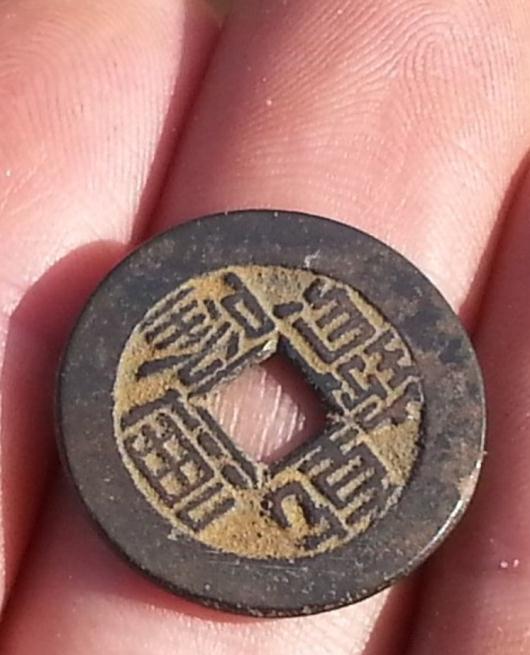


This Chinese coin, thought to date between 1736 and 1795, was found recently in Elcho Island.(Photo:abc.net.au)
A coin hundreds of years old found on a remote island off the Northern Territory coastline may be the first evidence of contact in the 1700s between Aboriginal people and traders in China, a heritage expert has said.
The brass coin has been identified as coming from the Qing Dynasty and was minted between 1736 and 1795.
It was found on July 25 during a week-long expedition to Elcho Island by a group of heritage enthusiasts who call themselves the Past Masters.
"It certainly shows the contact between Northern Australia and the trade with the Middle Kingdom, with China," said Mike Owen, a member of the group.
Aboriginal oral history talks about Chinese merchants coming to Australia and they also speak of using Chinese coins as fishing weights.
Mike Owen
Mr Owen said this was the first time such an old Chinese coin had been discovered in northern Australia.
"It is the only evidence that Chinese merchants may have visited Northern Australia in the context of the trepang trade," Mr Owen said.
Elcho Island is part of the Wessels group off the northeastern tip of Arnhem Land, and came to prominence when 1,000-year-old African coins were found on one of the islands in the 1940s.
How those coins came to be located in such a remote area has not yet been determined.
Mr Owen said the Chinese coin was possibly brought to Australia by the Macassan people, who came from Indonesia to trade with Aboriginal people for trepang, also known as sea cucumbers, or from Chinese merchants.
"The [the Macassans] dealt with Chinese agents and they sold trepang down to China," Mr Owen said.
After being found by a member of the expedition using a metal detector the coin was photographed and then put back in the sand where it was found.
"Aboriginal oral history talks about Chinese merchants coming to Australia and they also speak of using Chinese coins as fishing weights," Mr Owen said.
Copyright ©1999-2018
Chinanews.com. All rights reserved.
Reproduction in whole or in part without permission is prohibited.